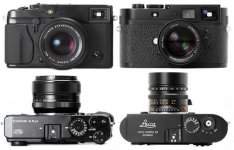Adanac
Well-known
If the GXR had the evf and focus peaking of the NEX7 I'd get it. If the NEX7 had the microlens sensor of the GXR, or the sensor of the NEX5n I'd get it.
I actually prefer the focus peaking - Mode 2 - on the GXR. My in-focus rate is higher with the GXR than with the NEX.
Re "microlens", the definitive difference between the GXR and NEX is that the former doesn't have an anti-alias filter. Zeiss in a white paper points a finger at AA filters, in conjunction with the short back focal distances found in RF cameras and mirrorless compacts, as causing astigmatism which shows up as reduced/smeared detail in the corners and at edges.
The hope is the XPro-1, having no AA filter, won't suffer so, but who knows until we see images produced with a variety of M lenses. The Fujifilm lenses themselves have rather large exit elements, certainly much larger than any of my M lenses. They've designed their lenses to reduce the angle of the light path meets the sensor edges; how will our M lenses fare?
As the X-Pro1 currently offers no focus peaking or other focus assist for manual focus lenses, my interest in the camera is greatly diminished.
The X-Pro1 probably is the best fit for someone who intends to buy into their X mount lenses. It *might* be a good fit, in the future, for manual focus lens users, we just don't know for sure. What I do know for certain is that magnify alone is unsuitable for me for regular use of manual focus lenses.


